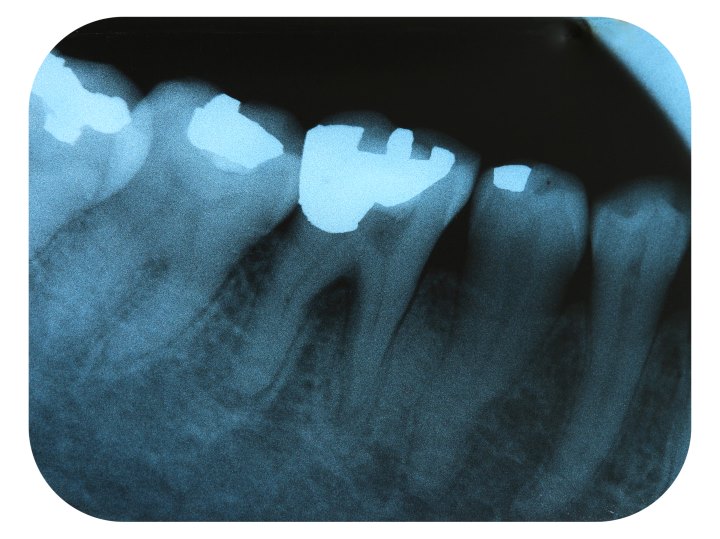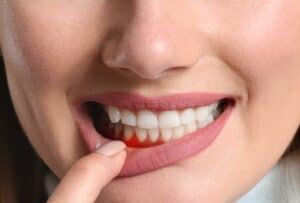Sensitivity to hot and cold food in a localized tooth region is a sign of reversible pulpitis.

The sensitivity will go away once the tooth is filled. A tooth is filled when the caries are removed to save the pulp.
The filling forms a barrier between the tooth and the oral cavity, thus preventing the bacteria from invading the pulp. However, sometimes, even after a tooth filling, you may suffer from pain. The pain might not occur instantly, but you may have it. sometimes later in your life.
Over time, some dental filling materials show shrinkage, narrowing the filling margins and causing food and liquids to leach into the tooth.
This will initiate secondary caries that can extend to the pulp. And once this happens, you may suffer from dental pain of an excruciating nature, which denotes irreversible pulpitis.
Why Your Tooth Needs a Dental Filling?
A dental filling is meant to remove the decayed portion of the tooth to replace it with a biocompatible yet durable filling material that mimics the tooth structure and anatomy.
The material is molded into the cavity prepared after removing the decayed portion of the tooth.
There are several filling material options available in the market, which include metallic fillings, resin fillings, or a combination of filling materials.
How A Tooth Is Filled?
Fillings are one of the most common dental procedures in a dental office. Local dentists in the US perform about 175 million fillings annually, and the figures are still a rough estimate.
A standard filling is done in a single appointment, unlike a root canal treatment that requires two visits.

The process of a filling is as follows:
1) Your dentist will give you local anesthesia around the affected tooth. This will number the area to make you pain-free while the procedure is performed on your tooth.
2) Next, your dentist will remove all the decayed portions of the tooth with a drill. This might cause you discomfort, but the process is short-lived and will end in a few minutes.
3) The dental filling is placed to mold the tooth. The material may be any per your choice and need, like porcelain, resin, metal, or porcelain fused to metal.
Tooth Sensitivity After Filling
Your tooth is typically sensitive after filling. It’s because the dental drill has activated the dentinal tubules in the dentine that causes the essential sensitivity.
It is advised to completely avoid hot and cold foods immediately after filling. The sensitivity may subside within a week. If it doesn’t, please see a dentist.
Another reason could be a broken filling. Certain metallic fillings need 24 hours to set. If a patient bites from a filling before 24 hours, there is a chance that the filling might break or loosen. Revisit your dentist to find out the cause of the pain and sensitivity.
Moreover, some patients are allergic to metallic fillings. If such a material is placed into the tooth, there is a chance that your tooth may show a reaction. It is advisable to get professional help in such cases.
Tooth Pain After Filling
Pain after a dental filling is a very common finding in scenarios when you’ve undergone a deep dental filling.
A slight discomfort for an hour or two immediately after a dental filling is pretty normal and doesn’t require a return dental visit. However, if the pain provoked by eating hot and cold food isn’t bearable, one may seek professional advice.
There are several reasons why a tot may be painful even after it’s filled.
Pulpitis
The dental pulp is a tissue that lies in the center of the tooth, protected by enamel and dentine. When bacteria eat up the dentine and enamel, they reach the pulp, causing an inflammation known as pulpitis. When the pulp gets inflamed, it causes the tooth to impart painful signals to the brain.
Irritated Nerves
The drawback of a deep filling is it is close to the nerves. The filling or the remaining caries might irritate the nerves, leading to dental pain.
The pulp is protected with the hard enamel and cementum shielding pulp in a regular tooth. However, a deep filling may cause a problem.
You may see the pain wear off with time as secondary dentine is deposited beneath the dental material on the use of specific resin-based dental filling materials/
Incorrect Bite
Usually, after a filling, your dentist will look for high spots.
These spots are essential to remove to settle your tooth with a filling material into a proper bite with the opposite tooth in the dental arch.
If a filling is too high, the patient would apply excessive force to chew the food. This will, in turn, cause stress on the oral muscles and the temporomandibular joint, leading to pain and discomfort.
What is Pulpitis After Filling?
- Definition of pulpitis after filling
Pulpitis after a filling is usually seen in cases when a prior deep dental filling is done.

The pulp within the tooth gets inflamed, causing pain and discomfort. Such a situation is rarely seen in minor fillings or pits and fissure sealings.
The nerves within the pulp get irritated, leading to inflammation. The inflammation triggers the pain pathway, sending signals through pain-carrying nerves to the brain.
There are two types of pulpitis:
Reversible Pulpitis
The pulpal inflammation can be reversed once the tooth is restored with a dental filling.
Irreversible pulpitis
The pulpal inflammation is irreversible and can only be treated with a root canal treatment.
- Causes of pulpitis after filling
There are several causes to why pulpitis occurs after a filling. A few of them are as follows:
1) Your tooth has gone through an injury or trauma. It can be in the form of a broken or cracked tooth.
2) You recently got a deep filling that irritated the pulp tissue
3) Your tooth has previously undergone multiple fillings.
- Risk factors for developing pulpitis after filling
There are certain risk factors for developing pulpits, which include:
1) caries or tooth decay
2) defective tooth fillings
3) injury to the tooth like a crack or sports injury
4) excessive tooth wear due to improper bite or acid attack.
Symptoms of Pulpitis After Filling
- Pain and sensitivity
Sensitivity and pain are the common symptoms encountered by patients after a dental filling. It’s actually because the nerves in the dental pulp are irritated, providing painful signals to the brain.
The pain may be localized or generalized in the region depending on the type of nerve fibers carrying the signals. The pain of irreversible pulpitis is excruciating, and it alters with the change in position.
The pain may radiate to the arm and head region and would demand the intake of over-the-counter pain medication for pain relief.
- Changes in tooth color
Sometimes, a tooth may undergo necrosis or death due to constant inflammation. Such a tooth injury is revealed with the blackening of the tooth structure. The tooth may show a color change and will also be tender when tapped.
- Swelling and tenderness
In irreversible pulpitis conditions, your tooth will mostly respond positively when tapped. The tapping reveals tenderness and inflammation going around within and outside the tooth structures.
Sometimes, a tooth abscess is formed at the tip of the root, which can cause swelling.
If left untreated, it may form sinus and fistula, which is when you’ll feel a bad taste in your mouth due to pus discharge from the tooth.
Treatment Options for Pulpitis After Filling
- Root canal therapy
Root canal therapy is the only procedure to permanently get rid of the pain of the tooth suffering from irreversible pulpitis.

Your dentist will remove the cavity and will clean the root canals with some dental motor and dental files, respectively.
He’ll then fill the canals with durable material and will give your tooth a dental filling. The root canal-treated tooth is provided with a dental crown or a cap to bring the tooth into function.
- Medications for pain and inflammation
Over-the-counter pain relief medications are taken to alleviate pain and the symptoms.
Usually, acetaminophen or ibuprofen are taken daily to help with it. More powerful pain relief medications like codone and oxycodone are also taken if pain doesn’t subside with the regular NSAIDs
- Potential need for tooth extraction
Sometimes, the tooth is so decayed that it’s impossible to save it. Extraction will be the only option to eliminate the pain, anyway. See your dentist for replacement options like dental bridges and dental implants after extraction.
Preventing Pulpitis After Filling
- Proper oral hygiene practices
Brushing twice daily with fluoridated toothpaste and flossing once daily can keep you safe from having dental caries. Learn to brush with the right brushing technique to maintain your oral hygiene on-point. Don’t forget to brush your tongue as well.
Visit your dentist frequently to discover any hidden caries or dental issues. You may also need a regular scaling and polishing treatment every six months to remove the plaque.
- Choosing the suitable dental filling materials
The right dental filling material can help prevent the tooth from reacting adversely. Choosing the right material as per your dental history and medical condition by your dentist can make a difference.








